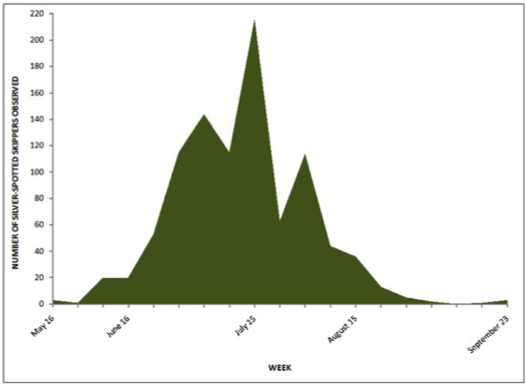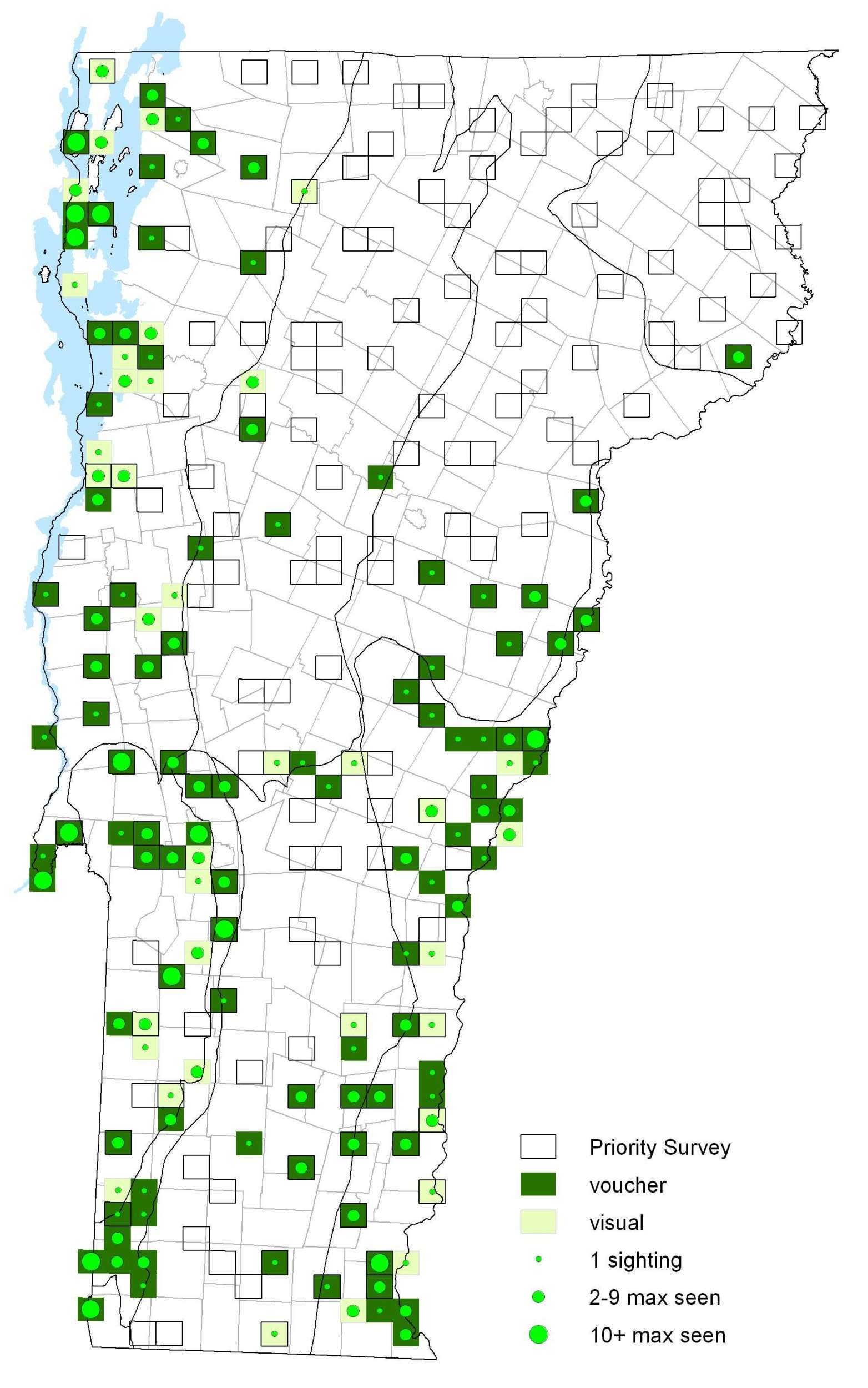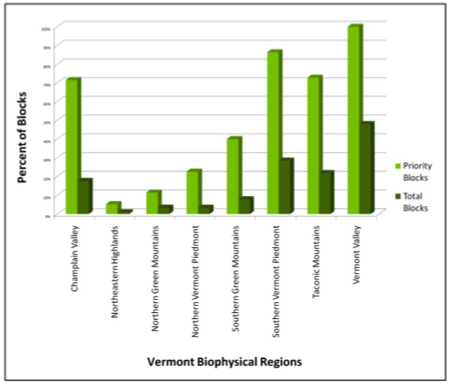|
Resident Conservation Status North American Range |
This butterfly provides welcome relief for those mired in ambiguous skipper identification. It has a strong, though erratic, flight. It is often found in open urban areas. Adults perch upside down under leaves at night and on hot or cloudy days. To seek females, males perch on branches and tall weeds, and occasionally patrol. Females lay single eggs near the host trees, and the caterpillars search for their proper host. Young caterpillars live in a folded leaf shelter; older larvae live in a nest of silk-sown leaves.
Identification
Large and easy to identify. Wings are brown-black; hindwing is lobed. Forewing has transparent gold spots and is long and pointed; underside of hindwing has a metallic silver band.
Flight
One brood. Extreme dates: 16 May 2004 in Springfield (B. Pfeiffer) and 24 September 2002 in Grand Isle (D. Hoag).
Distribution and Habitat
Conspicuously absent from the northern third of Vermont outside of the Champlain Valley. They prefer open woods. Caterpillar hostplants include a variety of woody legumes. In Vermont these may be: Black Locust (Robinia pseudoacacia), Tick-trefoils (Desmodium), and Groundnut (Apios americana). Apparently adults almost never visit yellow flowers, instead preferring Red Clover (Trifolium pratense), Thistle (Cirsium), Buttonbush (Cephalanthus) and Milkweeds (Asclepias).







